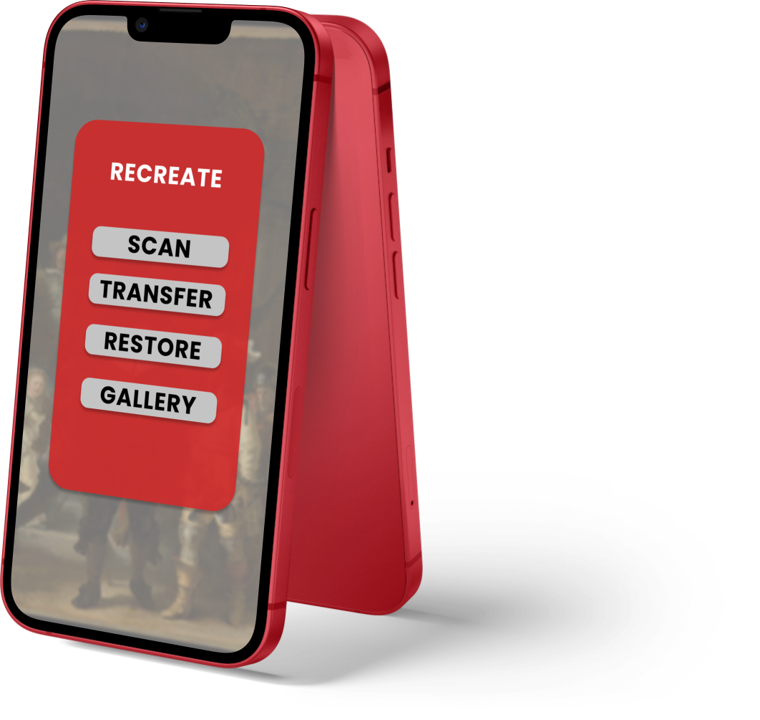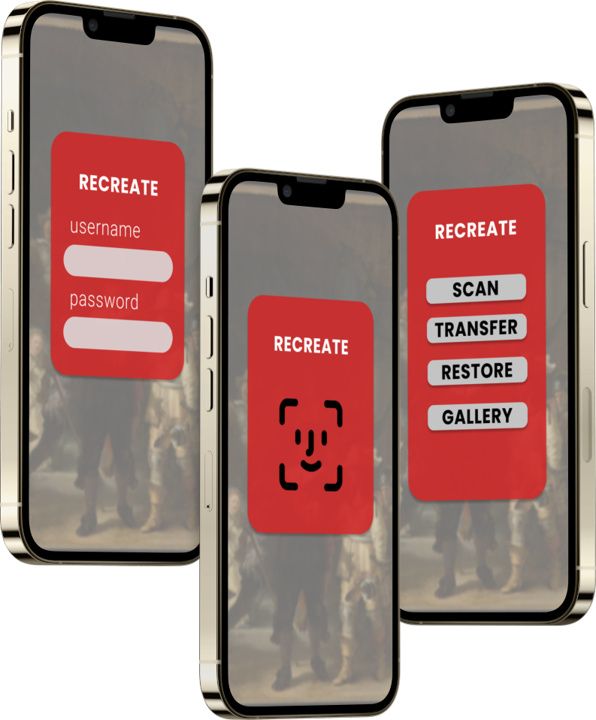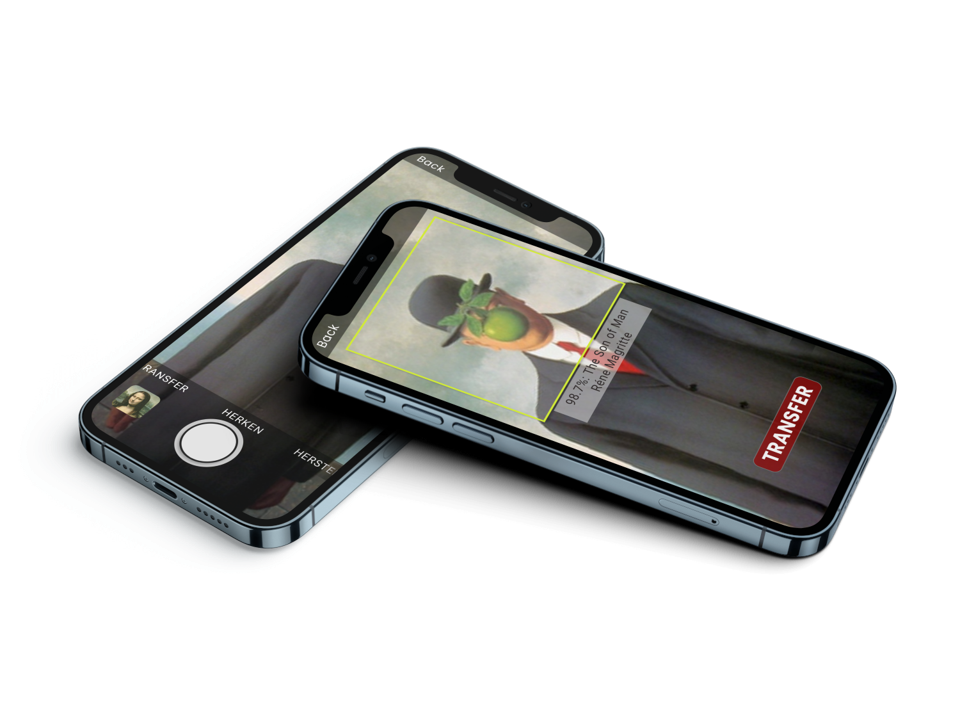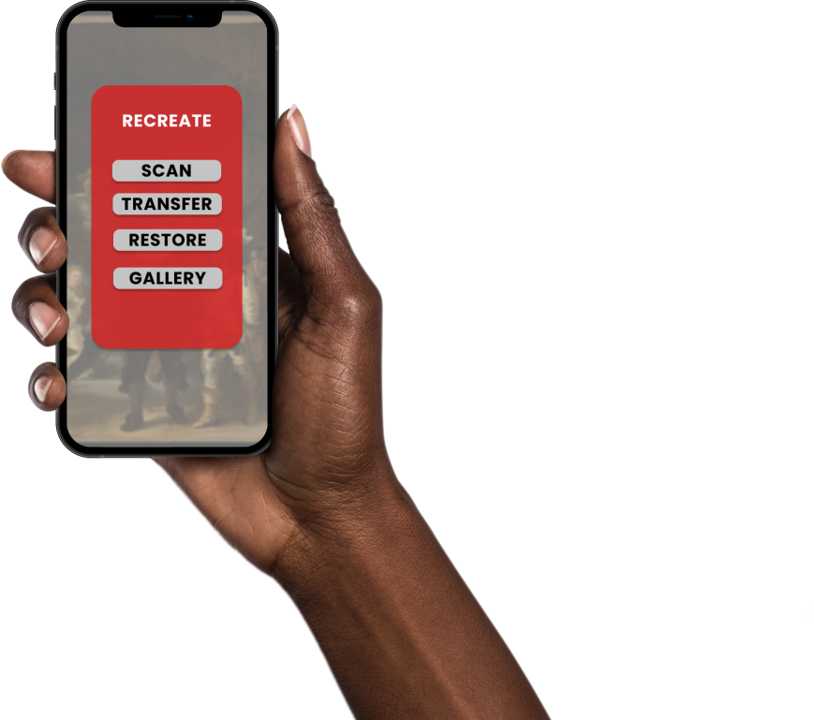One Year of AI in the Classroom
At the end of last year, I received an interesting challenge: to develop a curriculum, i.e. an entire year's package of content, objectives and evaluations, to introduce 14 and 15 year-old pupils to artificial intelligence and allow them to work with it themselves. And preferably within the existing curricula here at school: computational thinking, Design Thinking and various other subject areas. After a year of theory, practice and development, the students presented their final work in June by means of a pitch. A 'best of', from an AI solution to control your device with hand gestures to a model to make railway crossings safer, can be found below!
RECREATE – recognise, repair and transfer art styles
Art has been around for over 40,000 years. From the cave paintings of primitive tribes over the works of the Flemish Primitives to modern gems. Thousands of years of art styles and thousands of works of art, some in questionable condition. But what if an AI model could help us?
Imagine having a museum guide in your pocket who can recognise artworks and styles? A restorer who can give you a glimpse of what a restored work would look like? Or an artist in app format who can paint your selfie in the art style of the work hanging in front of you? This using techniques such as supervised learning (recognising art styles), DALL-E2 (for the restorations) and Style Transfer (to adapt your selfie to the desired art style)! It all sounds very complex, but throughout the school year the students worked with these AI techniques and successfully discovered their potential!
In-Form – Check your form with AI!
Sport is not only very relaxing, there is also a whole science behind it. How do you exercise healthily while paying attention to correct posture? AI models can help you with that!
Meet In-Form, an app that can analyse images and videos and pinpoint incorrect movements and postures. This way, the app helps you to achieve your optimal form! A tool for sports enthusiasts, but also for coaches and personal trainers.
RSS: Railroad Safety System
Railway crossings remain a very dangerous place. People sometimes take unnecessary risks there, with all the consequences for everyone involved. Year after year, Infrabel launches campaigns to raise awareness about this issue, but can we also make technical adjustments to level crossings?
Here comes RSS: Railroad Safety System. Here the level crossings are equipped with cameras. Their images are analysed by an AI system trained to recognise certain objects. If the system detects that the crossing is blocked when a train is approaching, it will determine what it is and inform and alert the driver. Based on the speed of the train and the distance to the crossing it will calculate the braking distance. If necessary the system will intervene and stop the train. In the control centre there is a screen on which the driver can see the images from the cameras. If an obstruction is detected, an alarm will sound and a light will illuminate, and this also happens when the train brakes automatically.
Sweet Dreams – baby phone 2.0
Cot death is a terrible event. Afterwards, parents are left with many questions, as the scientific causes are still being sought. There are methods that have a preventive effect, such as lying the baby on his back correctly. A baby monitor is a handy device to hear when the baby cries, but what if you designed a baby monitor that not only listens, but also monitors the baby's lying position? That's what the students designed the 'Sweet Dreams' app for, a baby monitor 2.0!
The students fitted an AI model to hundreds of images of a sleeping baby doll in various positions. They classified the data according to safe and unsafe recumbency positions and let the AI model search for patterns in the data. The result is an AI app that can perform detection via the camera, possibly mounted in the baby mobile above the bed. The detection is done locally on the device, so it does not need to be connected to the internet!
PrivacEye – Your safety, our goal!
Security is important. You don't want your important data to end up on the street or in the wrong hands. Of course, you can use a password for this purpose, but this method is certainly not infallible! All too often, people use passwords that are too simple, or reuse them, which makes them very vulnerable in the event of a data leak. With PrivacEye we secure files using biometrics. A kind of Face ID for individual files or programmes on your PC! For this, the students trained an AI-model on photos of one student in the class. So they used supervised learning. In addition, data was also collected to recognise other faces, without giving them access to the sensitive data.
From idea to 3D
A whole process preceded such a prototype. From theory lessons on the history and functioning of artificial intelligence, practical lessons where we worked with various AI models across different subjects, to the application of our 'Design Thinking' methods. A lot of work, but the results are worth it.
I want this in my class! What do I have to do?
Do you want to work with this in your classroom? Super! The future will be increasingly digital. A future in which artificial intelligence will play a very important role. It goes without saying that we need to prepare and motivate young people. I am happy to help you with that! Through the buttons below you can send me a message or get information about a training or workshop. I usually reply within 48 hours!




















